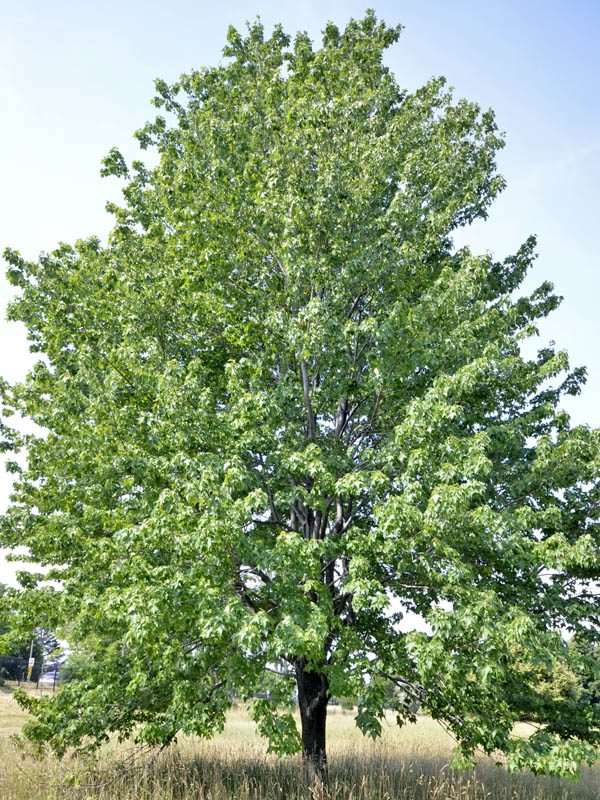| General Description | An extremely dynamic cultivar that is fast growing, adaptable and with very bright, intense red autumn colour. |
| Shape | Pyramidal when young to upright-oval when mature. |
| Landscape | It may be used as a shade tree either singularly or in groups but must be given room to grow since it is a large specimen. Since it is quite adaptable it will find use in urban situations such as shopping malls and parking lots. Brilliant autumn colour can be realized to full affect if planted in loosely spaced avenues or rows. |
| Propagation | Softwood cuttings under mist root well and avoid the potential incompatibility issues with grafting. |
| Cultivation | Plant in full sun to most soil types, it is tolerant to urban pollution but is intolerant to high pH. Graft incompatibility may occur where it is not grown on its own roots (softwood cuttings). It has a shallow root system and thus many surface roots lead to some instability in drought and possible understory cultivation issues. |
| Pests | Leaf hoppers can become an issue. |
| Notable Specimens | The Royal Botanical Gardens, Burlington, Ontario, Canada. |
| Habitat | Horticultural origin. |
| Bark/Stem Description | Wrinkly grey bark with brick red colour young branchlets. |
| Flower/Leaf Bud Description | Small rounded buds, 3 mm - 1 cm in size. |
| Leaf Description | 3 - 5 lobed leaf blades, 10 cm across, green abaxil and grey adaxil during the summer. Orange-red to red during autumn. |
| Flower Description | Pistillate, red flowers bloom before the leaves develop in early spring. |
| Fruit Description | The fruit is a samara, 2-5 cm, red, not ornamentally significant, maturing from May to June. |
| Colour Description | Green foliage during the summer which will later become intense, uniform red in the autumn creating a spectacular show. The grey bark becomes slightly wrinkled with age while the branchlets are a brick red colour. |
| Texture Description | A medium textured plant in all seasons. |
